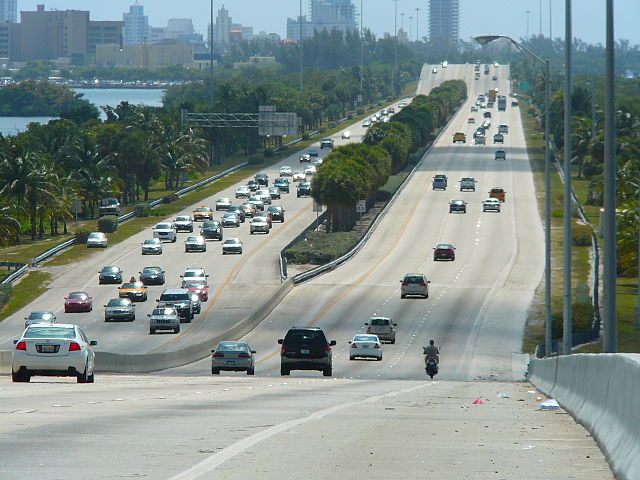The Sanibel Causeway is a causeway in Southwest Florida that spans San Carlos Bay, connecting Sanibel Island with the Florida mainland in Punta Rassa. The causeway consists of three separate two-lane bridge spans, and two-man-made causeway islands between them. The entire causeway facility is owned by Lee County and operated by the Lee County Department of Transportation. The entire causeway is 3 miles (5 km) long from end to end, and currently has a $6 toll in effect for island-bound vehicles only. The bridges are not individually named, and are simply referred to as bridges A, B, and C. The islands are also named A and B. Both series begin from the mainland side.
Bridge A, with Bridges B and C in the background.
The old drawbridge next to the current Bridge A as seen prior to demolition
The toll plaza
Bridge A
A causeway is a track, road or railway on the upper point of an embankment across "a low, or wet place, or piece of water". It can be constructed of earth, masonry, wood, or concrete. One of the earliest known wooden causeways is the Sweet Track in the Somerset Levels, England, which dates from the Neolithic age. Timber causeways may also be described as both boardwalks and bridges.
The Hindenburgdamm Rail Causeway across the Wadden Sea to the island of Sylt in Schleswig-Holstein, Germany
Kaichu Doro in Uruma, Okinawa-Honto, the main island of the Ryukyu Islands in Japan.
Satellite photo of the Great Salt Lake from August 2018 showing a major color difference between the northern and southern portions of the lake as a result of a mineral imbalance caused by a railroad causeway.
The Julia Tuttle Causeway, one of the major arteries connecting Miami and Miami Beach in Florida








